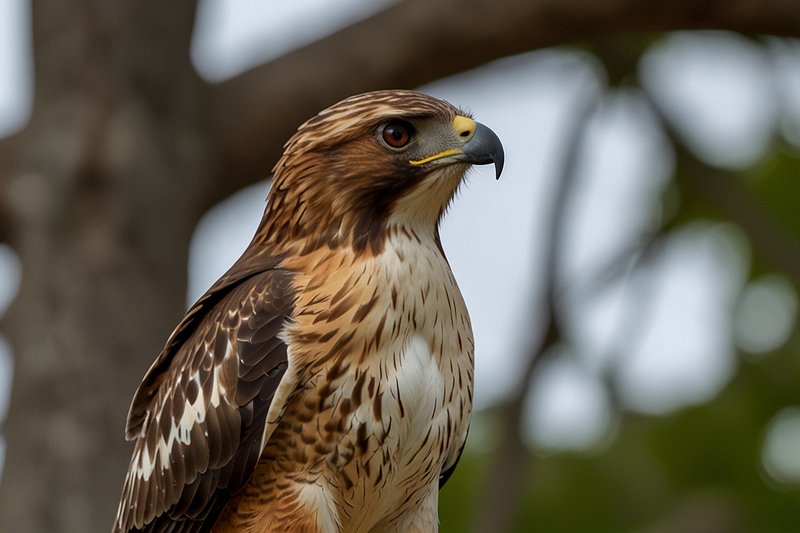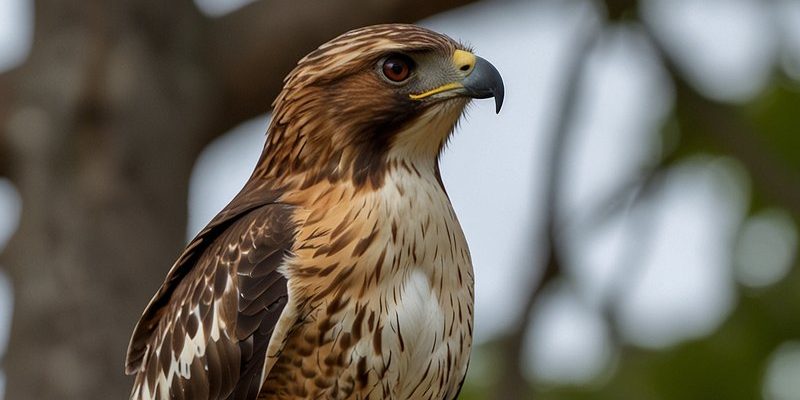
From ancient myths to modern-day stories, the hawk symbolizes various traits, often reflecting the values and beliefs of the societies that hold them dear. In some cultures, the hawk is seen as a messenger—an animal that carries important messages from the divine. In others, it represents skills, success, and keen insight. With that in mind, let’s dive into the colorful role the hawk plays in different cultures and folklore around the globe.
Hawks in Native American Culture
In many Native American tribes, the hawk holds a significant place in their traditions and stories. It’s often viewed as a spiritual messenger, bridging the gap between the earth and the sky. For example, the Lakota people regard the hawk as a symbol of vision and insight. They believe that the hawk’s ability to see from great heights represents the need to look at life from different perspectives.
The hawk’s feathers are highly valued and often used in ceremonies, signifying not just beauty but also an important connection to the spirit world. When a hawk appears in dreams or visions, it’s thought to convey warnings or guidance, encouraging individuals to pay attention to their surroundings and trust their intuition. Honestly, isn’t it special to think that these birds play such an integral role in the spiritual lives of many?
Hawks in Folklore Stories
Many tales feature hawks as heroic creatures or wise advisors. One famous story involves how a hawk saved a village by alerting the inhabitants to an approaching threat. This illustrates not only the bird’s keen instincts but also its connection to community welfare. In these tales, the hawk often embodies qualities such as loyalty, bravery, and protection, values that resonate deeply within Native American cultures.
These stories serve a dual purpose: they entertain and pass down important life lessons. They remind listeners to honor nature and acknowledge the role that animals like the hawk play in our interconnected world. When you think about it, these tales help people cultivate respect and understanding for the creatures that share our environment.
The Hawk in Celtic Mythology
In Celtic mythology, the hawk is often associated with wisdom and prophecy. The ancient Celts believed that hawks acted as messengers from the gods, offering guidance in times of need. The presence of a hawk was considered a sign of good fortune, a harbinger of success in endeavors.
One notable figure in Celtic lore is the god Lugh, who is associated with skills and crafts. Lugh is often depicted alongside a hawk, symbolizing the connection between divine skill and earthly mastery. This representation emphasizes the belief that success is not just about hard work but also about having insight and vision, much like a hawk surveying its territory from above.
Hawks in Modern Celtic Culture
Even today, the hawk continues to hold significance in various modern Celtic spiritual practices. People often seek guidance from the hawk, particularly when making important life decisions. The sight of a hawk can prompt individuals to pause and reflect, asking themselves what messages might be coming their way.
This cultural reverence extends beyond spiritual symbolism; hawks are celebrated in festivals and art, highlighting their enduring legacy. It’s fascinating to see how the lessons associated with these birds have persisted through the ages, reminding us that nature often has wisdom to share.
Hawks in Ancient Egyptian Beliefs
In ancient Egypt, the hawk was a powerful symbol linked to the sky and the divine. The god Horus, often depicted with a hawk’s head, represented kingship and protection. Horus was believed to be a guardian of the pharaohs, reinforcing the hawk’s association with authority and strength.
The hawk’s sharp eyes were seen as divine, allowing it to watch over the land and its people. This connection between the hawk and the heavens illustrates the bird’s importance in understanding life, death, and the afterlife. The Egyptians believed that hawks could guide souls to the afterlife, making them crucial in funerary practices.
The Legacy of the Hawk in Egyptian Art
Hawks feature prominently in Egyptian art and hieroglyphs, often serving as symbols of protection and power. Ancient Egyptians would wear amulets depicting hawks to invoke their strength, hoping to gain favor and protection from the gods. These artifacts not only adorned the dead but were also used in daily life, showcasing the continuing impact of the hawk in both sacred and secular contexts.
The legacy of the hawk in ancient Egypt reminds us that the connection between nature and spirituality transcends time. It’s interesting to think about how these beliefs influenced the way ancient Egyptians viewed their world and the lessons they left behind.
Hawks in Asian Folklore
In various Asian cultures, hawks are often admired for their hunting prowess and keen intellect. In Japanese folklore, for instance, the hawk represents bravery and determination. There are several stories of hawks that demonstrate loyalty and courage, illustrating the deep respect for this bird in Japanese culture.
Hawks are also symbols of good luck in some Southeast Asian cultures. People often hang images or sculptures of hawks in their homes to attract success and protection. This blend of admiration and superstition highlights how deeply people connect with the natural world, seeing these birds not just as animals, but as symbols of aspirations.
The Role of Hawks in Asian Martial Arts
Interestingly, the hawk’s qualities have even influenced martial arts philosophies. Some martial arts use the hawk as a symbol of precision and focus, encouraging practitioners to embody these traits in their training. Just as hawks fly with purpose and intent, practitioners learn to cultivate a similar mindset in their martial arts practice.
This integration of the hawk into martial arts philosophy exemplifies how cultures adapt and incorporate nature into their rituals and values. It’s all about harnessing the essence of the hawk to inspire personal growth and development.
Hawks as Guardians in Modern Folklore
In contemporary stories and folklore, hawks are often seen as guardians of the natural world. These narratives emphasize the need to protect the environment and wildlife. Many modern tales cast hawks as wise protectors, much like the ancient stories that highlight their importance.
For instance, in urban environments, hawks are becoming symbols of resilience. They adapt beautifully to city life, serving as a reminder that nature can thrive even in developed areas. This portrayal fosters appreciation for wildlife and encourages communities to coexist with their feathered friends.
Hawks in Environmental Activism
The hawk has also taken on a role in environmental activism. Many organizations use hawks as symbols in campaigns to raise awareness about conservation efforts. By sharing stories of these birds, activists remind us of the interconnectedness of all living beings and the responsibility we have to protect our shared habitats.
It’s heartening to see how the hawk continues to inspire action and awareness in today’s world. They remind us that we all play a part in the circle of life and that protecting our environment benefits everyone.
The hawk occupies a unique space in cultures around the world, serving as a symbol of strength, wisdom, and protection. From Native American beliefs to ancient Egyptian mythology, and modern-day environmental advocacy, hawks have woven their way into the fabric of human storytelling. They remind us of our connection to nature and the lessons we can learn from the creatures that share our planet.
As we ponder the role of the hawk in local cultures and folklore, let’s take a moment to appreciate these magnificent birds. They inspire us to observe, learn, and reflect. So, the next time you spot a hawk soaring above, remember the stories and meanings that accompany its flight. You might just find inspiration in its presence, urging you to look at the world from a new vantage point.

